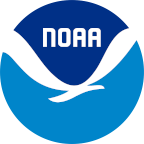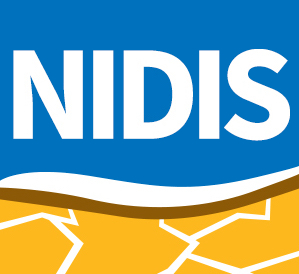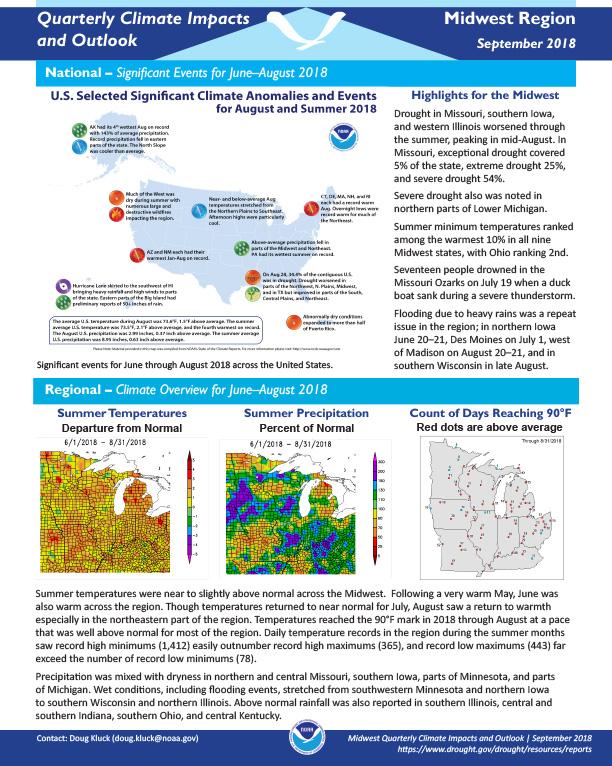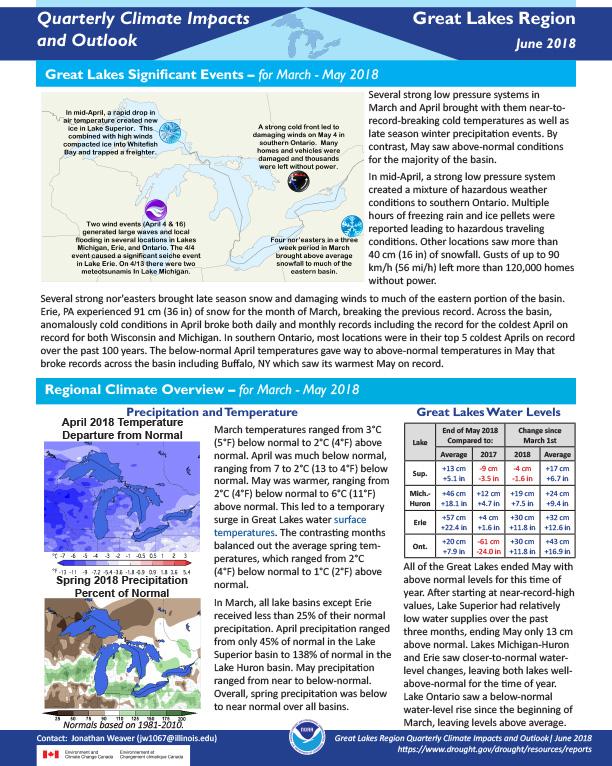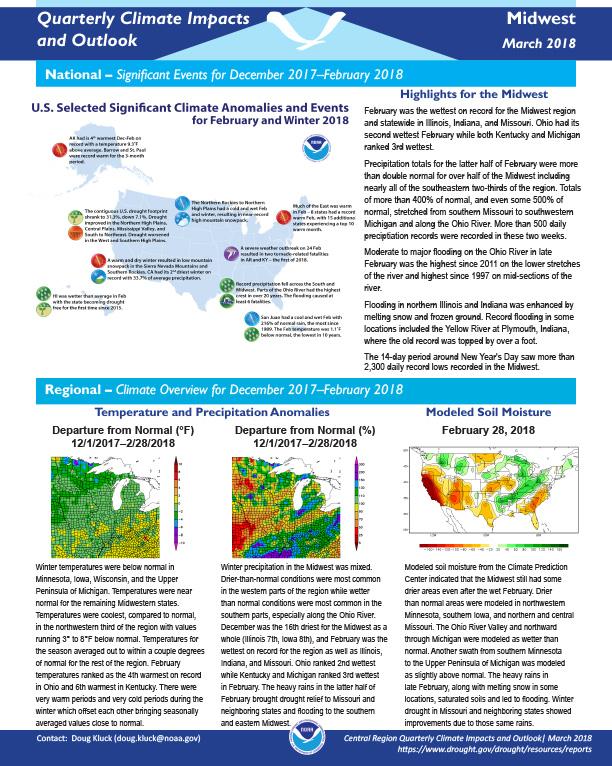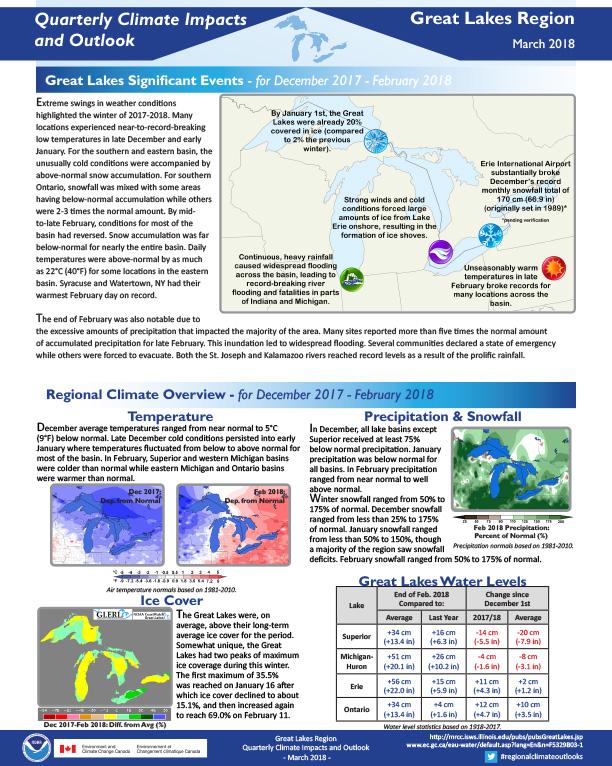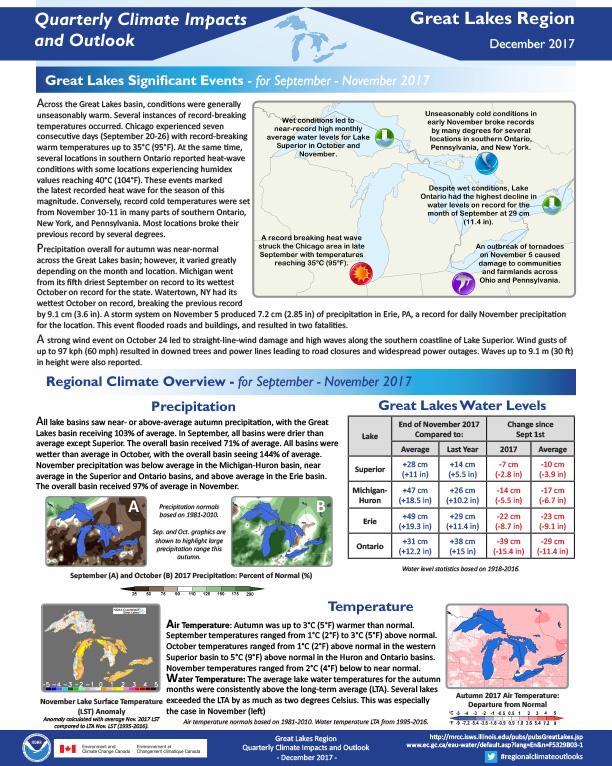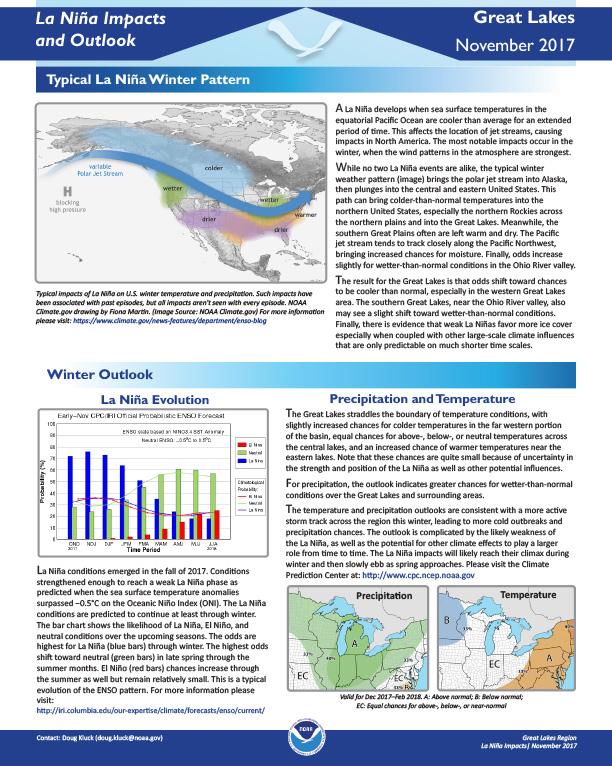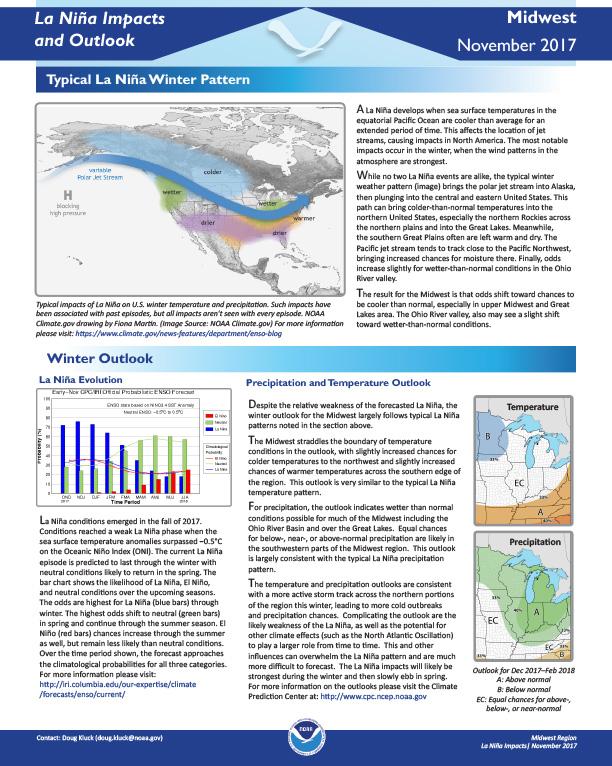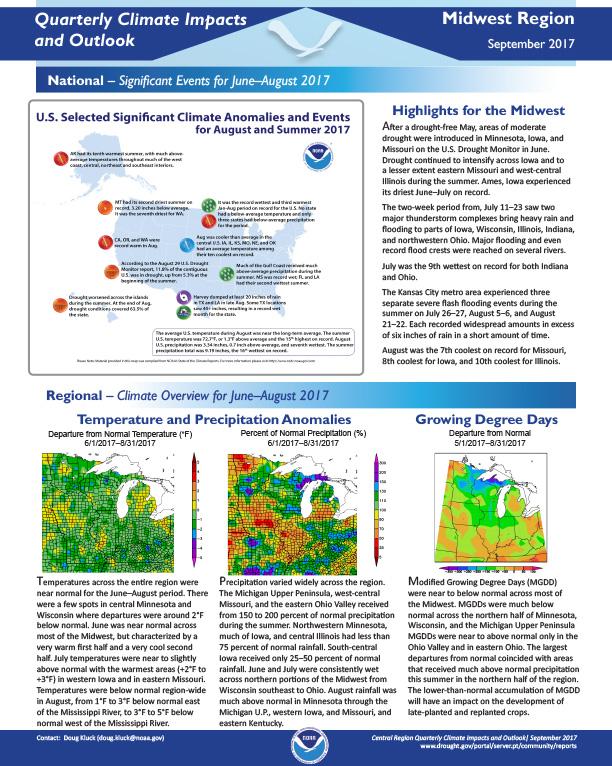Quarterly Climate Impacts and Outlook for the Midwest Region for June – August 2018. Dated September 2018.
Drought in Missouri, southern Iowa, and western Illinois worsened through the summer, peaking in mid-August. In Missouri, exceptional drought covered 5% of the state, extreme drought 25%, and severe drought 54%. Severe drought also was noted in northern parts of Lower Michigan. Summer minimum temperatures ranked among the warmest 10% in all nine Midwest states, with Ohio ranking 2nd.
Quarterly Climate Impacts and Outlook for the Midwest Region for March – May 2018. Dated June 2018.
Regionwide temperatures in April ranked as the 2nd coldest since 1895, only 1907 was colder, and were followed by record warm temperatures in May. Regionwide temperatures rose by more than 25°F from April to May when the normal increase is just over 10°F. April also saw heavier than normal snows.
Quarterly Climate Impacts and Outlook for the Great Lakes Region for March – May 2018. Dated June 2018.
Several strong low pressure systems in March and April brought with them near-to-record-breaking cold temperatures as well as late season winter precipitation events. By contrast, May saw above-normal conditions for the majority of the basin.
Quarterly Climate Impacts and Outlook for the Midwest Region for December 2017 – February 2018. Dated March 2018.
Quarterly Climate Impacts and Outlook for the Great Lakes Region for December 2017 – February 2018. Dated March 2018.
Quarterly Climate Impacts and Outlook for the Great Lakes Region for September – November 2017. Dated December 2017.
Quarterly Climate Impacts and Outlook for the Midwest Region for September – November 2017. Dated December 2017.
Defines La Niña; gives outlook for winter temperatures and precipitation; possible effects of La Niña on the Great Lakes region, including agriculture, the economy, water levels and lake ice.
Discussion of La Niña in winter; outlook for precipitation and temperatures; impacts on agriculture, ecosystems/rivers, and the economy; how past La Niñas have unfolded.
NOAA’s Regional Climate Services Program created these Outlooks to inform the public about climate impacts within their respective regions. Each regional report contains easy-to-understand language, and anyone can access them through the Drought Portal at https://www.drought.gov/drought/resources/reports.
Quarterly Climate Impacts and Outlook for the Midwest Region for June – August 2017. Dated September 2017.
After a drought-free May, areas of moderate drought were introduced in Minnesota, Iowa, and Missouri on the U.S. Drought Monitor in June. Drought continued to intensify across Iowa and to a lesser extent eastern Missouri and west-central Illinois during the summer. Ames, Iowa experienced its driest June–July on record.
